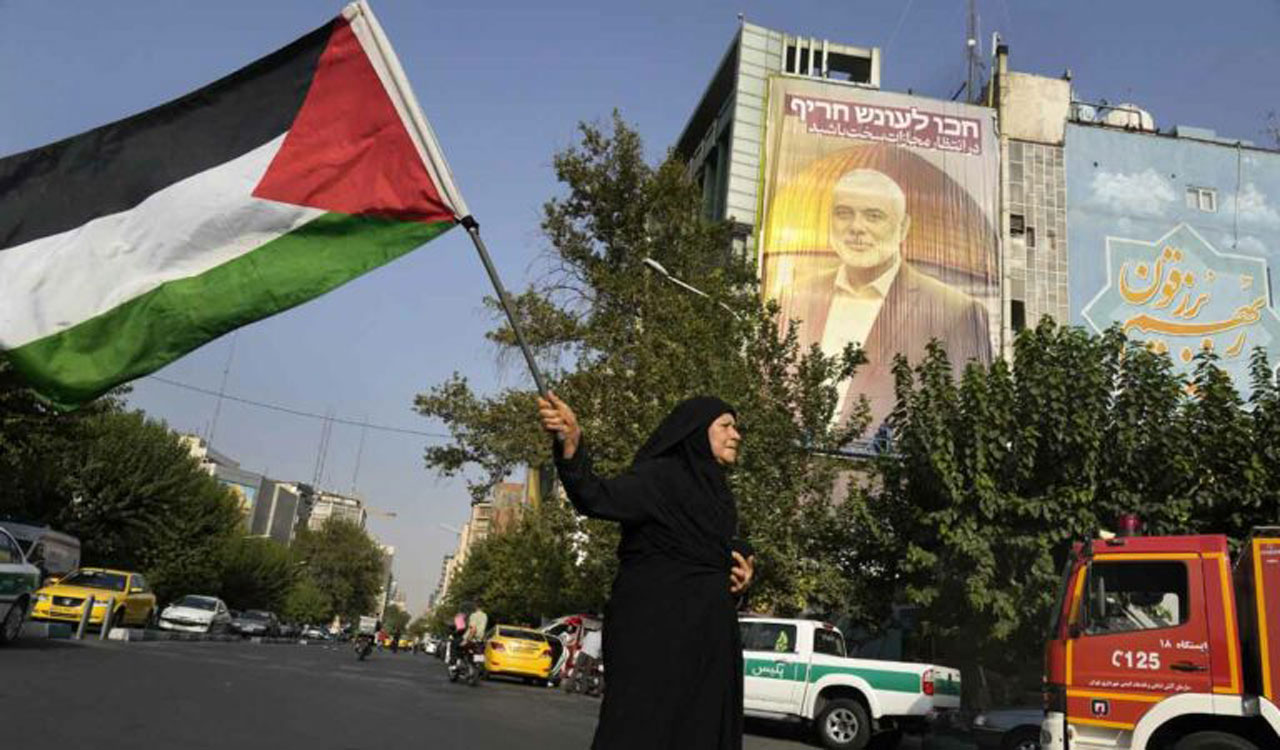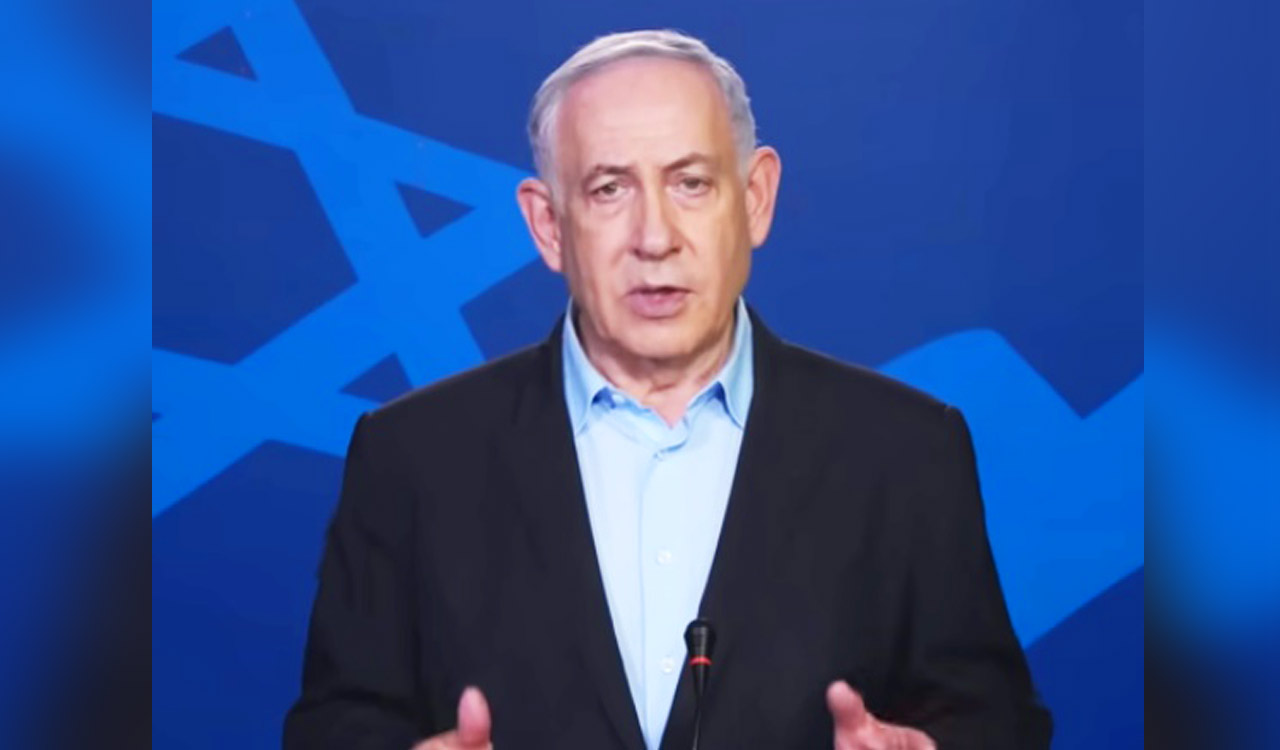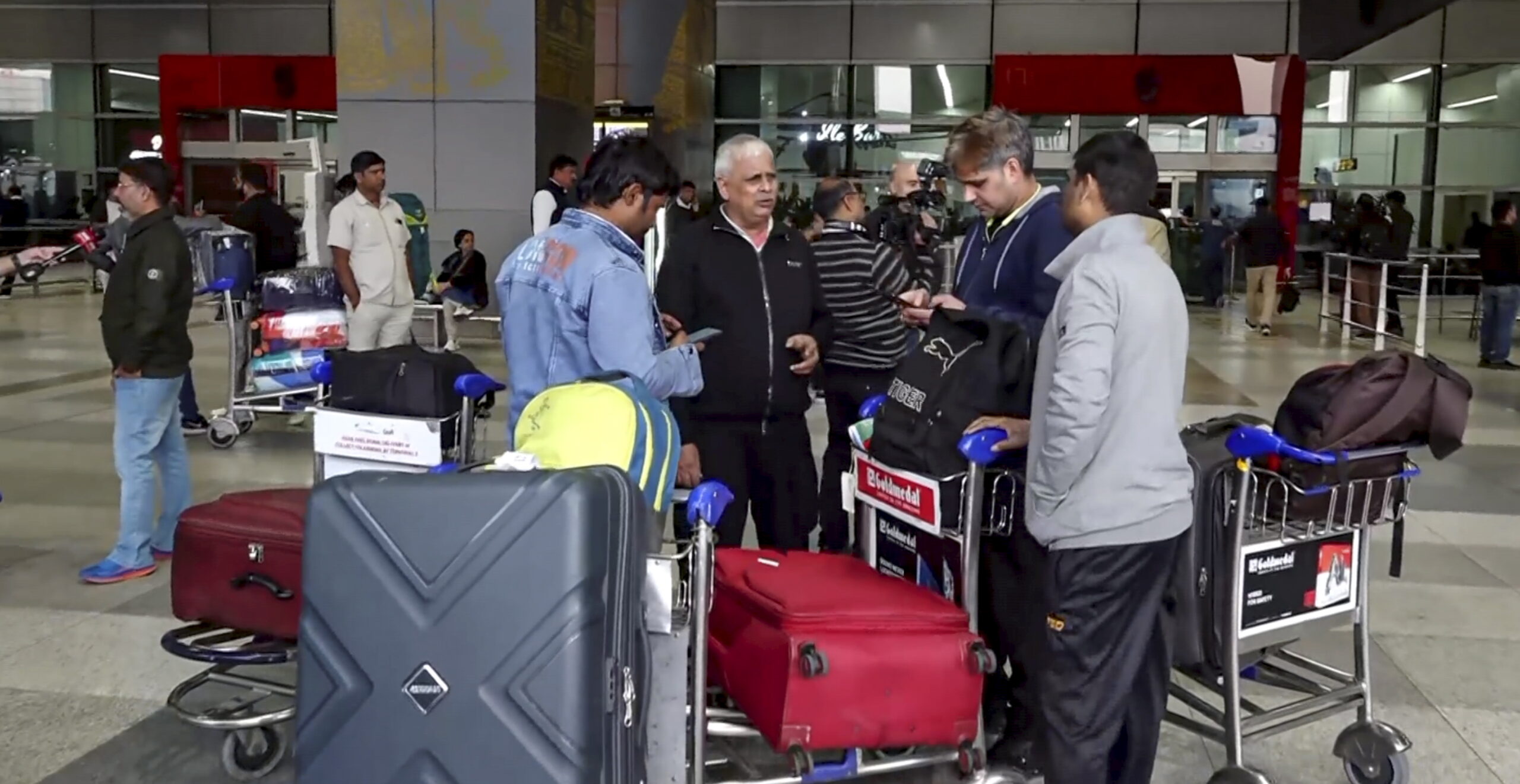Syria is turning into battleground of geopolitics
The Syria conflict might appear as a domestic civil war aimed at toppling an autocratic ruler but the reality is far more complex with various nations pursuing their strategic interests
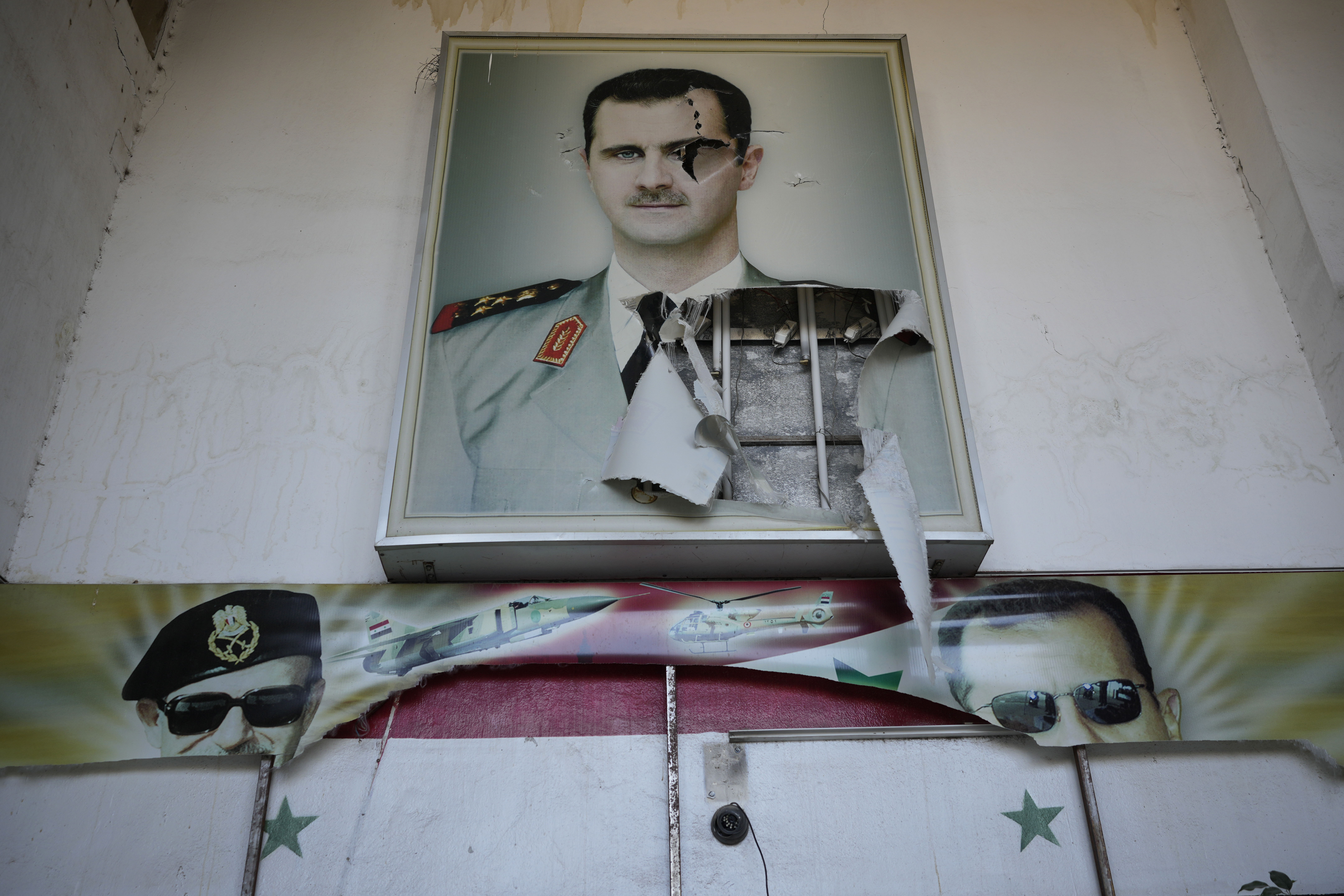
By Dr Anudeep Gujjeti, Dr Akhil Kumar
President Bashar al-Assad’s reign over Syria, which began in 2000 after he succeeded his father Hafez al-Assad, ended on December 8. The rapid takeover of major cities across Syria (Aleppo, Hama and Homs) by the rebels, culminating in the capture of Damascus and Assad’s eventual flight to Russia, has stunned the world, reminiscent of how quickly the Taliban took over Afghanistan after the United States of America withdrew its forces in 2021.
Although it took just around 10 days for the Syrian rebels to seize power, the struggle to topple Assad was a protracted 13-year-long battle that began during the Arab Spring in 2010. This period saw revolutionary uprisings in Tunisia, Libya and Egypt, all aimed at overthrowing autocratic leaders. In these 13 years of civil war, Syrians under Assad endured severe repression, widespread violence, suppression of dissent and human rights abuses, including rape, torture and the use of chemical weapons against civilians.
The civil war triggered a massive refugee crisis. According to the United Nations High Commissioner for Refugees (UNHCR), 4.8 million Syrian refugees are registered in neighbouring countries, including Jordan, Lebanon, Turkey, Iraq and Egypt. Additionally, nearly 7.2 million people are internally displaced within Syria. The human toll of the conflict has been unprecedented, drawing the attention and involvement of both regional and extra-regional powers, further complicating the situation in the war-torn country.
Domestic Players
Syria is situated in a geopolitically significant location on the eastern coast of the Mediterranean Sea and is home to a diverse population of approximately 22 million people, including Sunnis, Alawites, Christians, Shias and Druze. The country shares borders with Iraq to the east, Turkey to the north, Jordan to the south, and Israel and Lebanon to the southwest. Over its turbulent history, all these neighbouring States have played a role in shaping Syria’s trajectory, either directly or indirectly.
While Syria is recognised as a sovereign nation-state, much of its territory has been controlled by various factions. The eastern and north-eastern parts of the country are predominantly under the control of the Kurdish-dominated Syrian Democratic Forces (SDF), a US-backed force. Before the ouster of Assad, the north-western region, including Idlib governorate, was controlled by Hayat Tahrir al-Sham (HTS), a rebel group led by Abu Mohammed al-Jolani and a former al-Qaeda affiliate that played a prominent role in the anti-Assad revolt.
Some pockets in northern Syria were held by the Syrian National Army (SNA), a Turkish-backed rebel force. Significant areas, including major cities such as Aleppo, Homs, Hama and Damascus, remained under the control of the Assad regime. The Syrian Army, supported by the pro-government paramilitary National Defence Forces, was the primary force governing these regions. Assad’s government also received substantial support from Russia, Iran and Hezbollah, enabling it to retain power for much of the conflict despite mounting opposition.
Extra Regional Powers
To a normal observer, the conflict in Syria might appear as a domestic civil war aimed at toppling an autocratic ruler. However, the reality is far more complex. Syria has become a geopolitical battleground where various nations have pursued their strategic interests.
- Turkey
According to the UNHCR, Turkey hosts nearly 3 million registered Syrian refugees who fled since the outbreak of the civil war in 2011. While Turkey initially welcomed these refugees, mounting domestic pressure forced the government to take measures to address the crisis. Additionally, it views the Kurdish rebels in Syria as an extension of the Kurdistan Workers’ Party (PKK), which is designated as a terrorist organisation by Turkey, the European Union and the US. Turkey has provided support to rebel factions such as the SNA, which operates in coordination with HTS.
- Iran
had been sending Hezbollah fighters to support Syrian government forces against the rebels. By aligning with Assad, Iran aimed to solidify its ‘Axis of Resistance’, which includes Hezbollah in southern Lebanon, against Israel. However, with the toppling of Assad, Iran risks losing its crucial land connect to Hezbollah, potentially disrupting this alliance.
- Russia
entered the fray in 2015 to support Assad. Russian forces played an important role in helping Assad reclaim lost territory through extensive airpower and military assistance. Moscow also maintained strategic military installations in Syria, including a naval base in Tartus and an airbase in Hmeimim, which served as platforms for projecting power in the Eastern Mediterranean. These bases underline Russia’s broader aim of preserving its global influence and countering Western dominance in the region.
- Israel
has long-standing interests in Syria, particularly concerning the Golan Heights, which it seized during the 1967 Six-Day War and unilaterally annexed in 1981. Its move was not recognised internationally, except by the US in 2019. Israel’s primary concern remains countering Iranian influence in Syria.
- US
also has a significant presence in Syria, with about 900 soldiers deployed, primarily supporting the Kurdish-led SDF in their fight against the Islamic State (ISIS). US forces have established a 55-km deconfliction zone around their garrison in al-Tanf in southern Syria, which serves as a base for counter-ISIS operations and training Syrian opposition factions.
Most importantly, the effects of the Syrian Civil War were felt in European nations due to the ensuing refugee crisis. Approximately 95,000 Syrians now reside in Austria, a development that has fuelled the rise of far-right politics in the country. Germany hosts the largest Syrian diaspora population outside the region, with about one million Syrians. According to the United Kingdom’s Home Office, over 27,000 people from Syria have sought asylum in the UK. Although many European countries initially adopted an open-door policy for refugees, over time, it became a burden. As a consequence, the political landscape in these nations has increasingly shifted towards the right and the leaders were highly involved in finding a solution to the problem.
Turning Point?
So, the question arises as to what led to the swift capture of Syria by the rebels led by HTS. The answer lies in the shifting geopolitics of the region. After the Russian invasion of Ukraine, Russia became deeply entangled in the war, diverting the majority of its resources to the conflict with Ukraine. Meanwhile, the October 7 attack on Israel by Hamas pulled Iran and Hezbollah into a war with Israel, opening multiple fronts. Israel’s well-executed strikes on Hezbollah’s rank and file nearly crippled the organisation, causing significant setbacks to its leadership. With Iran directly engaging in attacks on Israel for the first time, its focus also shifted towards that conflict.
Additionally, corruption within the Syrian government forces, an ongoing economic crisis and widespread defections to rebel groups severely weakened the army. The regime’s heavy reliance on external manpower and material support, particularly from fighters originating in Hezbollah, Iraq and Afghanistan, exacerbated its vulnerabilities. With Russia, Iran and Hezbollah preoccupied with their own battles, the Syrian rebels, especially HTS, with support from Turkey, seized the opportunity to launch an offensive against Assad’s regime. Interestingly, all this while the US remained on the sidelines.
West Asia’s Ambitions
Given the latest geopolitical developments in West Asia, it has become increasingly apparent that all members of the Iranian ‘Axis of Resistance’, including Iran itself, are now prioritising their domestic security and stability over regional ambitions. While the Houthis continue to engage in attacks on shipping in the Red Sea, the combination of military and economic pressures has constrained Tehran’s capacity to project power as effectively as it was in previous decades.
Simultaneously, Ankara’s growing influence, bolstered by strategic alliances and an expanding economic footprint, has not only reshaped Turkey’s relations with its neighbours but also redefined the balance of power across West Asia.
Israel has moved swiftly to remilitarise and consolidate its control over the Golan Heights. This strategic manoeuvre underscores Israel’s intent to secure its northern frontier and pre-empt any potential threats emerging from the vacuum left by Assad’s regime. The reoccupation of this contested territory has heightened tensions with neighbouring States.
This evolving landscape underscores the need for a nuanced understanding of the interplay between domestic priorities and external ambitions among key regional actors.
What’s Next
The collapse of Assad’s regime signifies not only a redrawing of Syria’s territorial map but also a fundamental redefinition of power dynamics across West Asia. Iran’s long-standing ambitions in the region have suffered a severe blow, as its strategic project — centred on maintaining a foothold in Syria and preserving its land bridge to Hezbollah in Lebanon, has unravelled alongside the fall of Damascus.
Similarly, Russia’s Mediterranean and Middle Eastern strategy now faces an existential challenge. The potential loss of its military bases in Syria, particularly the naval facility at Tartus and the airbase at Hmeimim, would significantly diminish its capacity to project power into West Asia and Africa. These setbacks mark a critical turning point for two of Syria’s most prominent allies during the conflict.
In contrast, Ankara finds itself in a stronger geopolitical position, capable of influencing post-conflict dynamics and leveraging its ties with various factions in northern Syria. Turkey’s strategic priorities, including managing Kurdish ambitions and maintaining its influence over rebel forces such as the SNA, are likely to become increasingly central to West Asian regional power calculus.
From a Western viewpoint, the fall of Assad’s regime has so far yielded tangible benefits. For one, the dismantling of Iranian influence in Syria disrupts Tehran’s ability to support Hezbollah and other proxy groups, thereby reducing the threat posed to Israel and other regional actors. Additionally, the prospect of millions of Syrian refugees returning home could alleviate significant domestic political pressures on Turkey and European countries that have borne the burden of hosting displaced populations for over a decade, stabilising certain aspects of regional politics and easing social tensions in host nations.
In Syria, it is hard to predict the kind of polity that will be established. The rebels have appointed Mohammed al-Bashir as Syria’s interim Prime Minister. Al-Bashir previously led a “salvation government” in Idlib and is backed by HTS. Although US Secretary of State Antony Blinken has stated that the US fully supports Syria’s political transition process, he remains sceptical about the inclusive nature of the governance. Meanwhile, UK Prime Minister Keir Starmer remarked that it is still “far too early” to consider a policy shift regarding HTS. This caution stems largely from the historical patterns in nations that have experienced the overthrow of autocratic leaders, often followed by civil wars and the rise of religious extremism.
Al-Bashir has guaranteed a “peaceful transition to democracy.” However, given the presence of numerous factions within the country, achieving an inclusive domestic polity that secures the rights of women and minorities remains elusive. For the international community, this moment represents both a chance to facilitate a sustainable political resolution and a warning against complacency in the face of unresolved tensions and emerging threats.
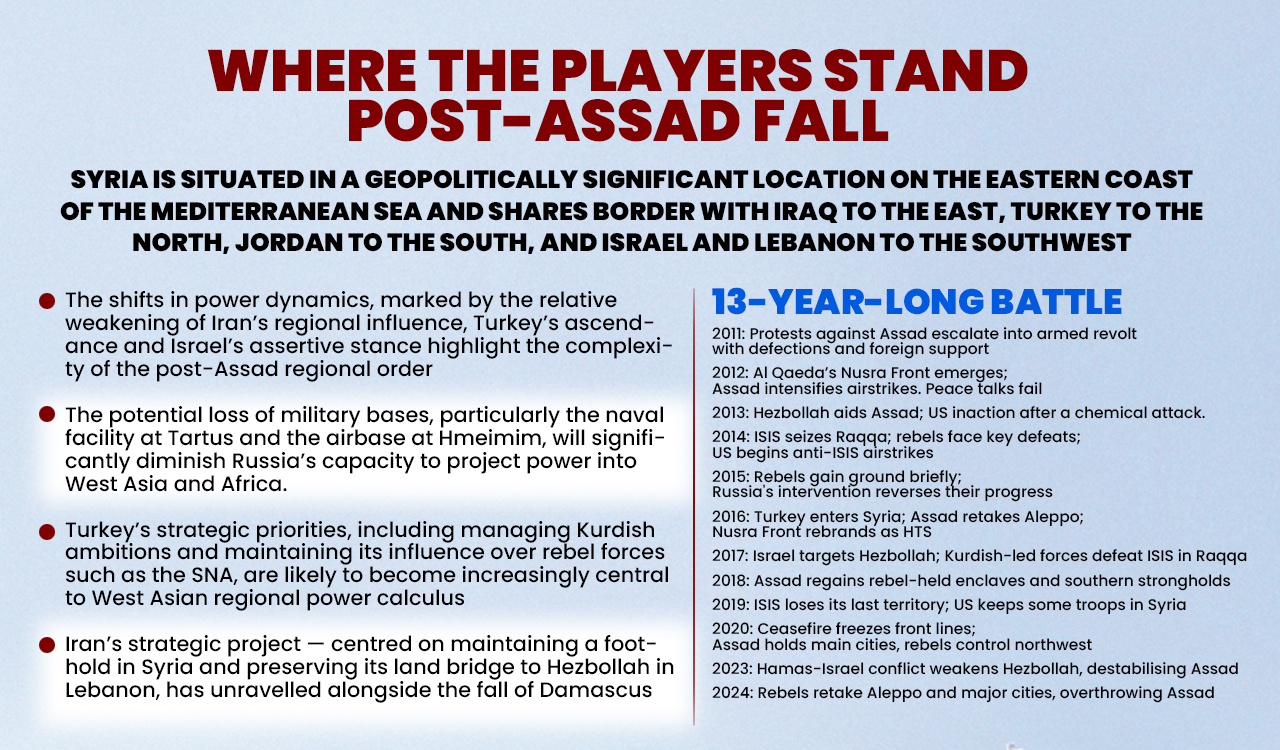

(Anudeep Gujjeti is Assistant Professor, Centre of Excellence for Geopolitics and International Studies, REVA University, Bengaluru, and Young Leader, Pacific Forum, USA. Dr Akhil Kumar is a PhD from the Department of Political Science, University of Hyderabad)
Related News
-
Israel acknowledges killing Hamas leader Ismail Haniyeh in Iran, threatens similar assault on Houthis
-
Netanyahu says Israeli troops will occupy buffer zone inside Syria for foreseeable future
-
Palestinian security forces launch a rare crackdown on militants in the West Bank
-
India evacuates its 77 citizens from Syria amidst panicky situation
-
Cartoon Today on December 25, 2024
4 hours ago -
Sandhya Theatre stampede case: Allu Arjun questioned for 3 hours by Chikkadpallly police
5 hours ago -
Telangana: TRSMA pitches for 15% school fee hike and Right to Fee Collection Act
5 hours ago -
Former Home Secretary Ajay Kumar Bhalla appointed Manipur Governor, Kerala Governor shifted to Bihar
5 hours ago -
Hyderabad: Organs of 74-year-old man donated as part of Jeevandan
5 hours ago -
Opinion: The China factor in India-Nepal relations
6 hours ago -
Editorial: Modi’s Kuwait outreach
6 hours ago -
Telangana HC suspends orders against KCR and Harish Rao
7 hours ago

